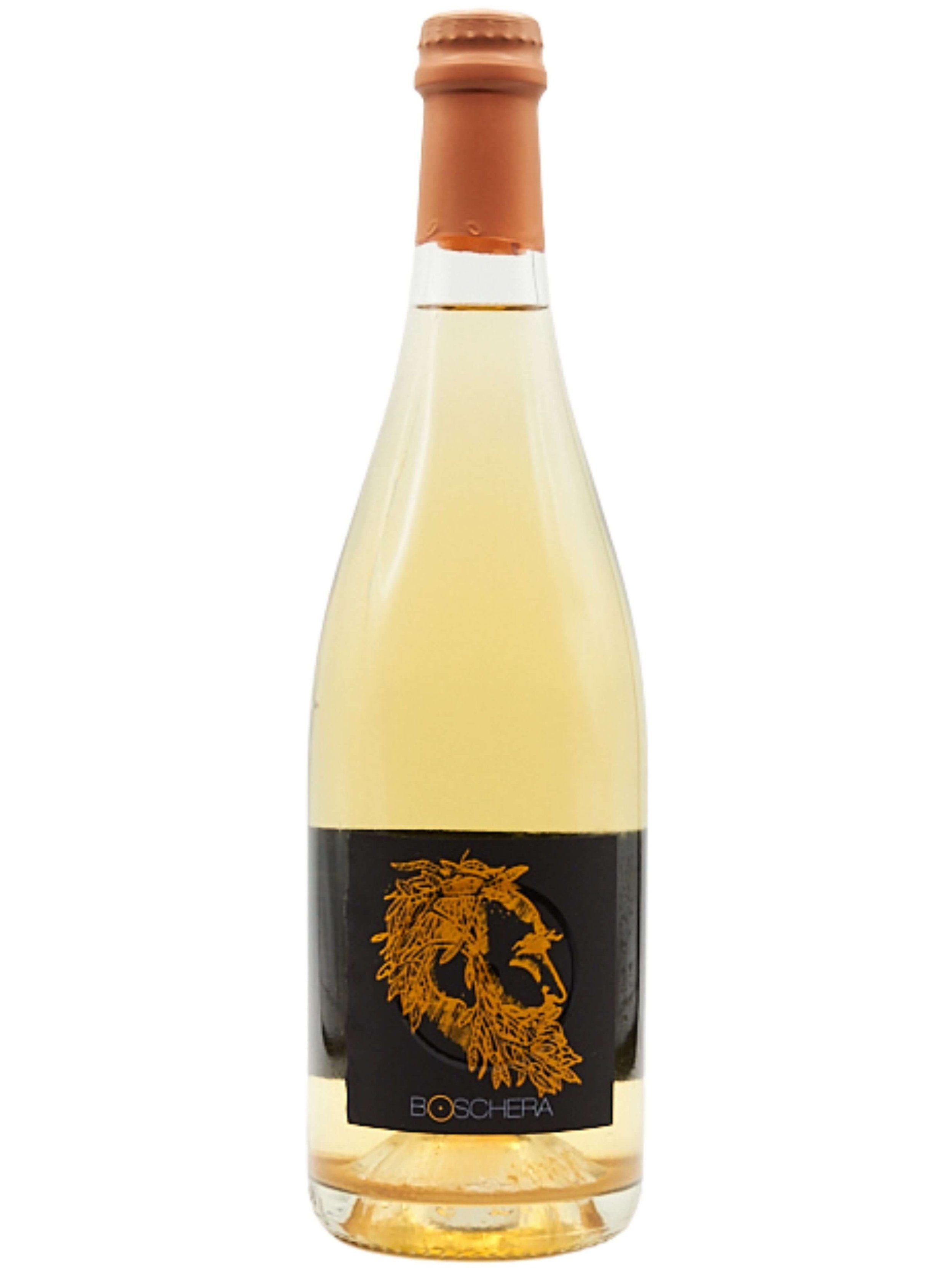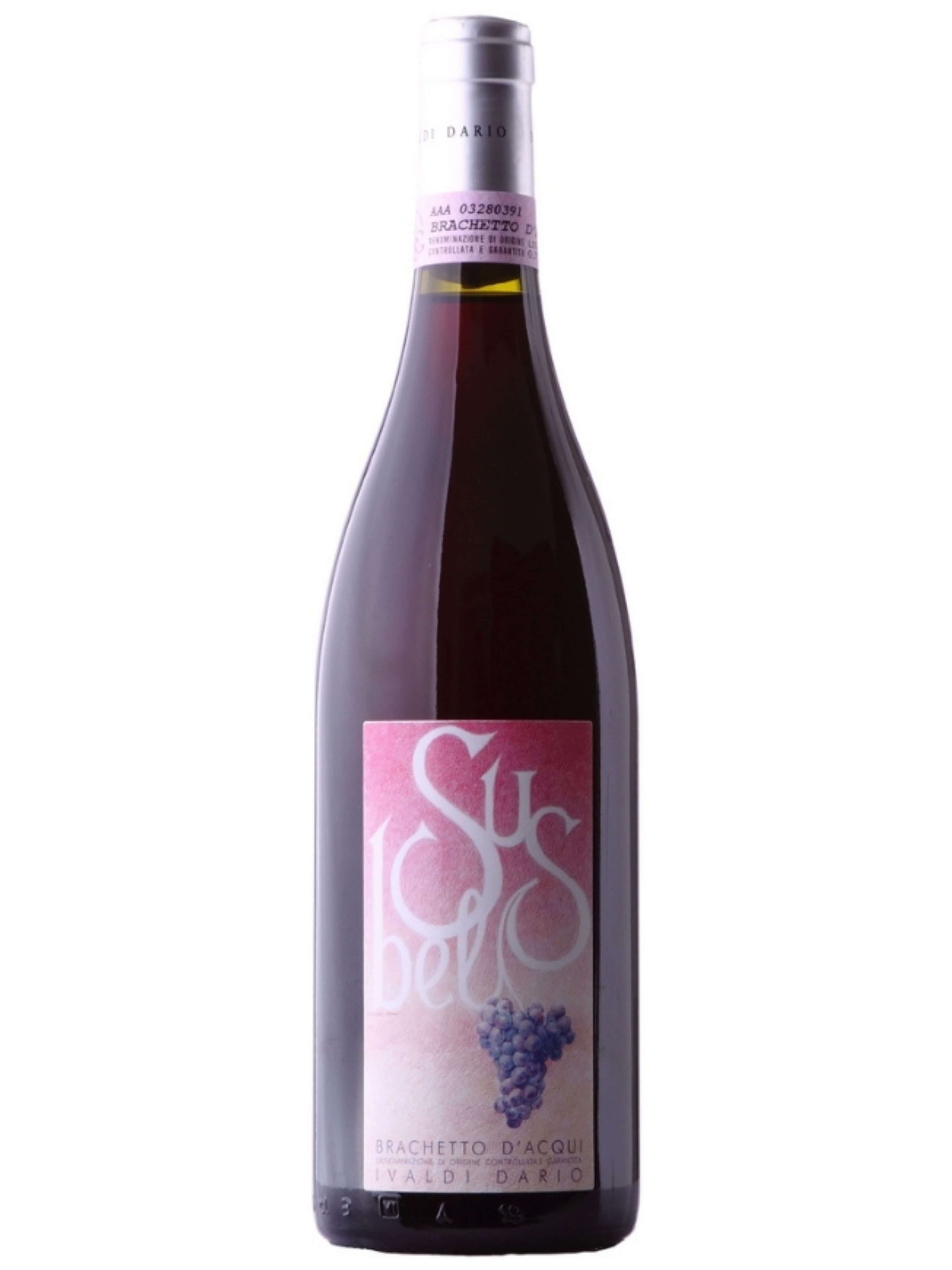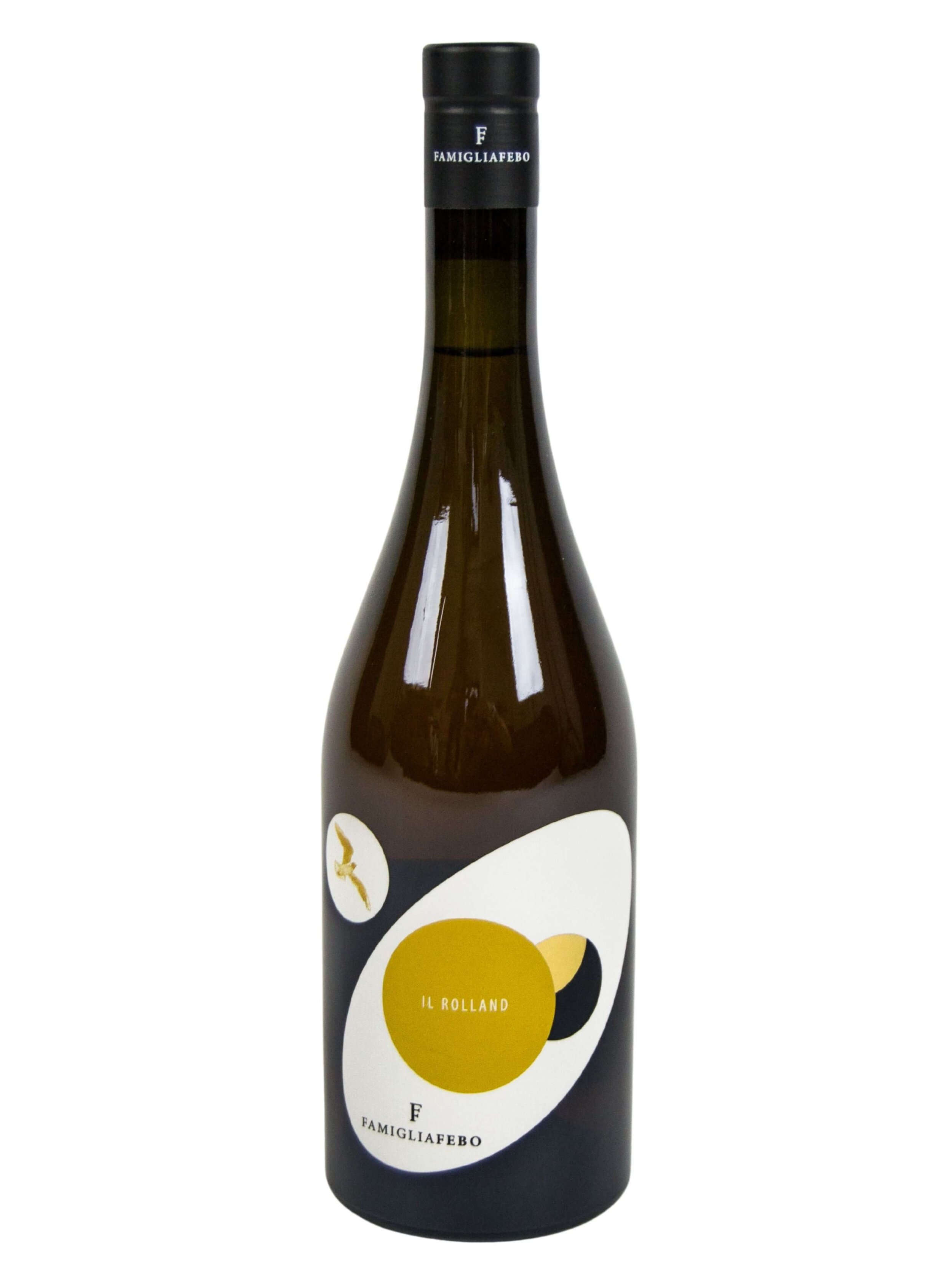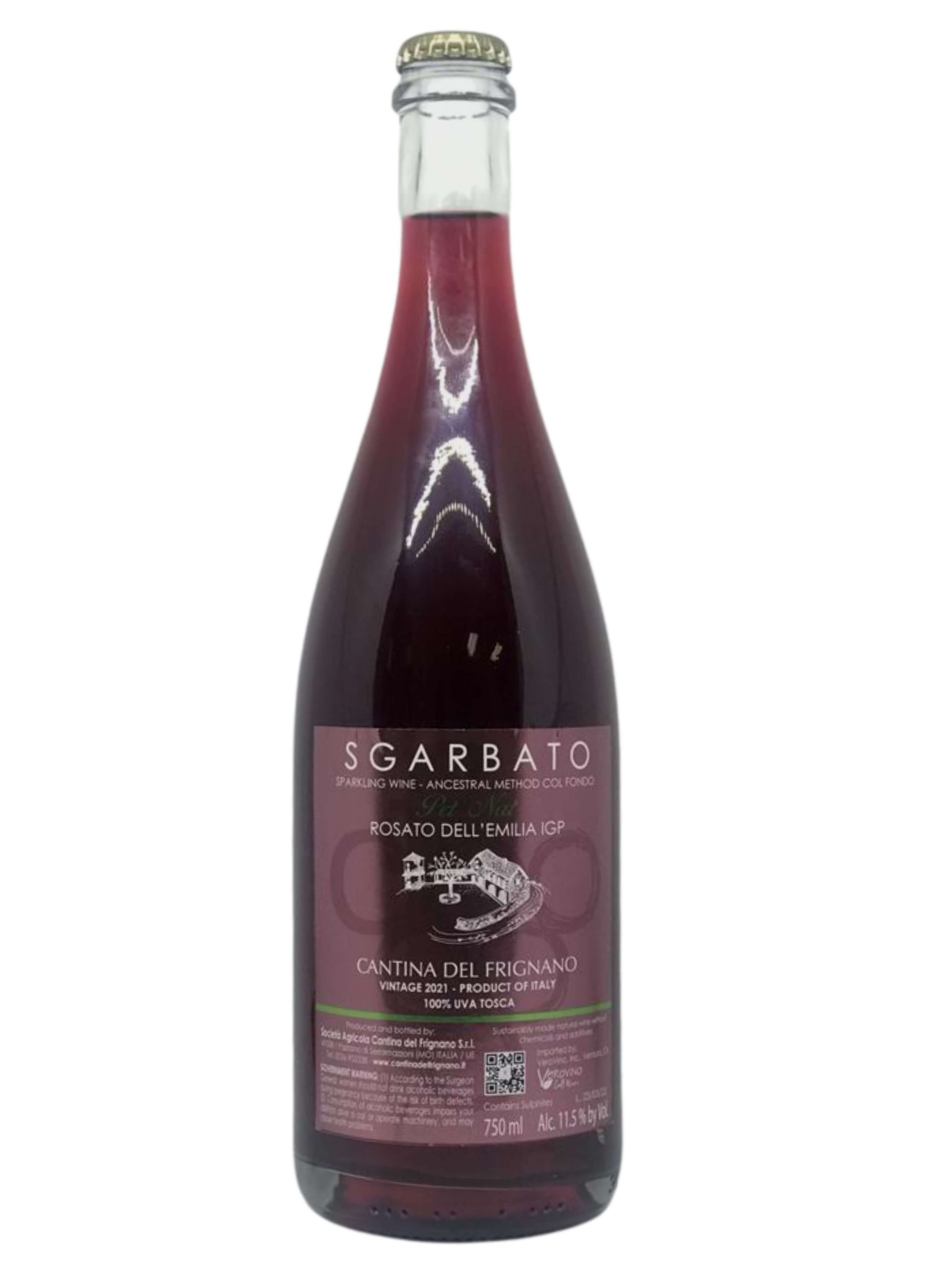The Joy of Discovering a ‘New’ Wine Grape
For a wine enthusiast, stumbling upon a wine made by a grape you never had before is like finding a treasure in a treasure hunt. Eric Asimov, New York Times wine critic, expresses the delight in finds of “new” wine grapes so well in this 2022 article about “uncommon grape varieties” which make “joyful” wines. He writes “…my encounter with an intriguing new grape was even more joyful [than finding the wine]. It was a reminder that no matter how well versed one might be in the intricacies of producers, regions and issues, wine always has more to reveal.”
Eric describes the “hook” that not only catches wine explorers, but also is an impetus to transform a wine loving consumer to a wine professional, as it happened with Sheila Donohue, founder of Vero, when she came across the super rare grape variety, Jera, while stopping at a winery alongside the bike trail on a vacation in Italy. In fact, when she wrote the blog article about this discovery in 2014, she entitled the article “The joy of finding a rare native wine grape variety.” This was while she was still working in banking and technology. Who would know that 4 years later she would take the plunge and make wine (and food) her livelihood, by starting a company, Vero, which seeks out hidden gems of wine not yet in the US.
One of her goals in starting Vero is to uncover these finds of unusual and intriguing wines (and foods) steeped in history and to get wine lovers and foodies to consider a switch from their usual go-to wines and expand their palates and experience the joy of trying new white wine varieties or an uncommon wine variety red. At Vero, we believe that true wine appreciation comes from exploring beyond the familiar, embracing the diversity that the rare wine world has to offer. Are you ready for the thrill of discovering wine grape varieties you never knew? Join in on the ride…
Getting on the unbeaten path
A huge side benefit of Sheila’s decision to focus on unknown wild and scarce wines to discover, is that it feeds into the concept of mindful drinking: of being curious and attentive to not only the tasting experience of a wine but also the rich (and authentic) stories behind them. Authenticity in wine goes hand in hand with venturing off the beaten path. Discovering new grapes and styles is a joyful way to connect with both of these principles, and that stepping outside your comfort zone opens up a world of possibilities. We love to share our joy in making these finds, like we did here 2 years ago when importing alternative sparkling wines made from rare unknown grape varieties.
The beauty of wine lies in its boundless potential for exploration. It's a constantly evolving landscape, with so much to learn and discover. That's why we at Vero travel the globe, seeking out those rare and elusive wines that we know adventurous drinkers will love to explore: the method to our madness is told here. We know that, because the journey of wine is never ending, the joy of discovery is always within reach.
Grape Variety vs Varietal
First and foremost, just to get it out of the way, we are talking about wine grapes, which are also called grape varieties. And, for those of you that are familiar with our portfolio, the wines we lean towards are wines that are made from one grape, that are known as monovarietal wines, which, in the US wine industry this term is usually shortened to the term “varietal wine”. Variety and varietal often get mixed up, honestly, because the words are so similar. It’s easy enough for a wine writer to make this mistake, us included, lol.
Adam Teeter at VinePair has a good tip to distinguish them: “The easiest way to think about these two words is that one, variety, is a noun; and the other, varietal, is an adjective.” So, when talking about wine grapes, it’s not grape varietal but instead grape variety.
What is an Uncommon Grape?
By our simplest definition, an “uncommon grape” are grape varieties that are difficult to track down, be it via wine store or wine list. They are wine grape varieties that many have not heard of, or ever tasted. With this, we push aside basically what could be referred to as “international varieties”, or those grapes commonly grown and sold worldwide. Think of grapes such as Cabernet Sauvignon, Chardonnay, Merlot, Sauvignon Blanc, Pinot Noir, Syrah. Or they could be grapes that have become more “popular” in recent times, such as Malbec, Grenache, Tempranillo.
However, it is worth noting that this article is written from and for the US market perspective. While some of the following grapes are genuinely rare (with just a few acres of vines planted), some are more widely planted and do have some notoriety in their native country/land. In this latter case, we are rather pinpointing and referring to the grape’s “uncommonness” in America.
For this reason, we like to look for uncommon grapes in two ways: the rediscovered route and the indigenous route.
The original Famoso vine, a variety that they thought was disctinct until farmer Montalti rediscovered it, only about 20 years ago. Read the story here.
Rediscovered Grapes
While we say “new wine grape,” since it may be new to us, most of the ones we refer to are grape varieties that were formed by nature, without the intervention of man/woman. Many had been existence for a long time and then were forgotten, for a number of reasons, mostly economic driven. Then, to our benefit, they get re-discovered. It is along the unbeaten path that many varieties get rediscovered varieties, often saved by hard working artisan farmers. These are grapes that might have been thought to be extinct, or simply not remembered. They slowly were ripped up, mixed into new vineyards, or just forgotten. That is, until someone found a few spare vines or a producer began striving to champion and grow the exposure of the grape outside of a few local bottles. These are grapes like boschera from Valdobbiadene, and famoso and uva tosca from Emilia Romagna.
We would also consider schioppettino in this category. While it has grown considerably in the last 30 years, it was on the verge of extinction with only 70 vines in existence in the 1970s. It was thanks to Friulian winemakers such as Hilde Petrussa that it was saved and today could even be considered simply an “indigenous grape”, such as in our second category today.
Indigenous Grapes
Unbeaten path two, is indigenous or local varieties that are hard to find or not well known in the US. Just to reiterate, we mean grapes or wines that while may be well known and liked by locals of an area or country, have not quite made the jump across the pond and are still “unknown” by most American standards. The beauty of these grapes, is that they can offer a unique expression of a place and terroir as they were shaped and “bred” for that place specifically, thriving in unique microclimates and soils that impart distinct characteristics to the resulting wines. These are grapes like saint laurent, albana, ciliegiolo, brachetto, durella, and turbiana.
Why do they Become Uncommon?
How do these grapes fall by the wayside? As we mentioned, some have only fallen by the wayside on an export basis: they are just hard to find here in the US. This is an obvious cause of market pressures: importers (others, certainly not us!) that choose to follow tried and true varieties with name recognition leading to the neglect of lesser-known local varieties. But what about the lost varieties? How is it that they disappear? Well, it is not always a simple natural phenomenon. Various factors can contribute to their decline and, in some cases, near extinction, such as:
A bunch of uva tosca grapes, used to make a sparkling red pet nat by Frignano.
Phylloxera: This devastating pest ravaged vineyards worldwide in the late 19th century, wiping out countless grape varieties that lacked resistance. Oftentimes, producers chose to replant vineyards either hardier vines or international varieties. (Like with Uva Tosca)
Forgotten Legacy: Over time, certain grapes simply fall out of favor or are forgotten as newer, trendier varieties or styles take center stage. (Like with Pecorino.)
Political Influence: Shifting political landscapes or consorzio groups can disrupt established winemaking traditions and lead to the decline of certain grapes. (Like with Schioppettino.)
Profitability: Winemakers may prioritize planting more commercially successful international varieties, leaving less space for less-known grapes. (Like with Boschera.)
Despite these challenges, a dedicated community of winemakers and enthusiasts is working tirelessly to revive and preserve these rare gems. Their efforts ensure that these grapes don't fade into obscurity, but rather continue to enrich the world of wine with their unique stories and flavors.
How to Fill Your Glass: 10 Uncommon Grapes to Try
The best part about exploring uncommon grapes is the joy of discovery. It's like being an explorer, uncovering new and exciting things that you never knew existed. And when you find a grape that you love, it's like finding a hidden treasure. We quickly listed a few above, but here are 10 of our favorites with a few notes why.
Albana: In the “indigenous” category, we find our first of the white wine varieties, albana. Made in both dry and sweet styles, this white grape from Romagna, Italy along the northern part of the Adriatic Coast. It was a favorite of Roman Empress Galla Placidia, and was even the first white wine DOCGs quality appellations in Italy, yet somehow this grape is not widely found outside of Romagna. Albana is characterised by strong flavors of juicy apricots, with with sharp acidity and minerality.
Boschera vines in Valdobbiadene.
Boschera: This one definitely falls in the “rediscovered” path. Boschera is so rare that there are less than 15 acres of it planted. From Valdobbiadene, Italy (the heartland of Prosecco), this Boschera is crafted by Eros Zanon, the “The Pet Nat Master” who had a hand in saving the grape from oblivion. Supplanted by the ever present glera grape (to make Prosecco) boschera was disappearing. But Eros planted the vine after some friends found a strange, unusual, vine in their local vineyards. They called him and asked if he wanted it… and thank goodness he said yes! A pet nat sparkling wine, Boschera tastes like orange honeyed blossoms. With a touch of bready yeast (thanks to being bottle col fondo, or on the lees), it’s almost like drinking a champagne, but without so much sweetness. (Watch our video about this grape.)
Brachetto: As VinePair says, “Can we make Brachetto popular, please?”. A (usually) sweet and sparkling red aromatic wine from Piedmont in Northern Italy, this grape is a victim of market pressures. Coming from an area where tannic nebbiolo, acidic barbera, and the similarly sweet and sparkling Moscato d’Asti reign as kings and queens, brachetto is often relegated to back vineyards in favor of higher money-makers. But not for generational winemakers at Ivaldi winery, where their brachetto is planted in a great location with hot sun to help the sweet grape ripen (hence the name, SusBel which means in the local dialect good sun). With a flavor reminiscent of fresh strawberries and hibiscus, this Ivaldi’s Brachetto d’Acqui is artfully crafted to mix just the right amount of color, sweetness, acidity, and tannin. We have found that Ivaldi’s Brachetto actually is great to use in wine cocktails, and a sweet and unique way to spritz up your aperitivo events with friends (get some of our favorite Brachetto Spritz recipes HERE). As well, you can learn more about this grape in our our recent article.
Durella: The durella grape has been around for centuries in Soave, around the town of Verona: in the Venice harbors Norwegian traders used to trade salted cod for these grapes! Yet, the grape fell out of style, especially in its traditional method sparkling wine form, when, as Ian d’Agata notes in Native Wine Grapes of Italy, “For the greater part of the last thirty years, Durella wines were an afterthought on the Italian fine white wine scene, when the race was on to see who could make the biggest and oakiest wines around. In those sorry times, there was little place for a high-acid wine blessed with delicate aromas and flavors, so Durella and its wines survived mainly as local phenomena.” As a note, the grape is called “durella”, however, once fermented it becomes a “Durello” wine. Fresh, mineral, yet with a fruity lemon/lime twist, Sandro de Bruno’s Durello Sparkling Wine is aged for 36 months on the lees, yet is still fresh and youthful, ready to enjoy. You can watch our video about this grape on YouTube.
Famoso: Another of our rediscovered entries, is this rarity from the Romagna area of Italy: Famoso. Most likely disappearing because of phyloxxera attacks, it was widely believed to be completely extinct, lost to time. However, in the early 2000s, two rows of it was found! Now it is slowly being planted, yet only a handful of producers craft wine with this white grape. One of which is Braschi, whose Monte Sasso Famoso is typical of the variety, with a chalky acidity that makes you think of a French Chablis.
Pecorino: Possibly confused for the sheep’s milk cheese of the same name, we are instead talking about a white wine grape, pecorino. A rediscovered grape, it was nearly forgotten in the 1980s when local Abruzzese farmers went out searching for old indigenous varieties to spice up their offerings, and they found pecorino. Initially it was used as a blending variety, but now it is gaining speed as a standalone variety, such as in Febo’s Rolland Pecorino wine. A deep rusty color, the only way to describe this wine is “apricots all day long”. You can watch a video about this grape on YouTube.
Saint Laurent: This is your classic “big in its home country but unknown in the US” case: Saint Laurent is the most planted wine variety red grape in the Czech Republic! Yet you are hard pressed to find it over here stateside, and we think that is a shame. A descendant of pinot noir, it shares some characteristics with its famous relative with a light color, velvety tannins and ripe cherry flavors. However, it can offer a bit more body or “beef” than your classic pinot noir, especially when aged in oak, as Thaya does. You can read more about this grape in our article all about it (with a food pairing).
Schioppettino grapes in the Vigna Petrussa vineyards in North Eastern Italy, Friuli Venezia Giulia on the Slovenian border.
Schioppettino: As mentioned earlier, schioppettino is one of those wines, like pecorino, that was on the path to being forgotten until someone stepped up in the 70’s. That person was Hilde Petrussa of Vigna Petrussa. We won’t dive too deep here as we have an entire article about this grape and its amazing story, but suffice it to say that this peppery red wine with its spicy cherries is delicious, no matter if it is unoaked, classic, riserva, or sweet!
Trebbiano Abruzzese: Moving back into our market pressures realm, we find trebbiano abruzzese. You might think that trebbiano sounds familiar: it is a common (and usually boring) white grape variety found throughout central Italy. However, trebbiano abruzzese is a distinct and different variety. Because of a similar name, this grape fell into the deathtrap of being confused for regular old trebbiano, and undesired. But’s different, and if you taste Febo’s Parella Trebbiano d’Abruzzo you will be certain of it. Watch our YouTube tasting of this grape to get the full story.
Uva Tosca: Devasted by phyloxxera, this grape from Emilia Romagna is most often used in blends and Lambruscos. However, thanks to Irene Balim of Frignano it is making a comeback as a single variety! Her wine, Sgarbato, tastes like a sparkling cranberry juice. You can watch our video about this grape on YouTube.
Check out our blog for more suggestions to find alternatives to your usual go-to wines, like in this article. If you’re not getting our newsletter, sign up here.
Where to Find Uncommon Grapes
Ready to taste some of these unique, hard to find, wild and scarce wines? We're passionate about curating a selection of wines that goes beyond the familiar and into the uncommon! We believe that wine is an adventure, a journey of discovery that leads you to unexpected flavors and captivating stories. There's a particular joy for us in uncovering wines crafted from rare and unique grapes. As a wine merchant, we sell our portfolio of these authentic, wild and scarce farm-to-glass wines (and olive oils) to businesses and consumers across the US:
Albana grapes, in Romagna, Italy.
If you are a distributor reach out to us introduce our highly curated portfolio of one of a kind small production wines to your state.
We sell to wine stores and restaurants in certain states - contact us to learn more.
If our farm crafted wines and olive oils are not in your local shop or restaurant, buy wine online here, and we’ll ship it to you, including wine gifts.
We also have an award winning wine club for true wine explorers that are seeking to continually discover unique, sustainable and authentic small production wines they never had. These are wines selected by our sommeliers and curated for each box.
We do corporate gifts and sommelier guided wine tastings. Email us and we’ll tailor unique and sustainable corporate gift ideas.
















